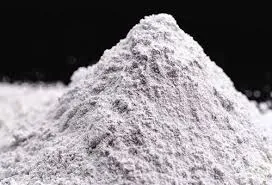
sep . 06, 2024 17:29 Back to list
HPMC Safety
HPMC Safety Understanding the Key Considerations
Hydroxypropyl Methylcellulose (HPMC) is a popular cellulose derivative widely used in various industries, including pharmaceuticals, food, and construction. Its unique properties, such as film-forming capabilities, thickening, and stabilizing abilities, make it a valuable ingredient in numerous applications. However, as with any substance used in commercial and industrial applications, safety considerations must be a priority.
Understanding HPMC and Its Applications
HPMC is a semi-synthetic polymer derived from cellulose, a natural polymer found in plant cell walls. Its versatility means that it can be used in a range of products, from dietary supplements and pharmaceutical formulations to cosmetics and food items. In pharmaceuticals, HPMC acts as a binder in tablets, a coating agent, and a controlled-release agent for drugs. In the food industry, it serves as a thickening agent, stabilizer, and emulsifier.
While HPMC is generally recognized as safe (GRAS) by regulatory authorities when used appropriately, safety assessments are vital to minimize potential risks associated with its use.
Potential Risks Associated with HPMC
1. Allergic Reactions Although rare, some individuals may experience allergic reactions to HPMC. Symptoms can range from mild skin irritations to more severe respiratory issues. It's crucial for manufacturers to conduct thorough allergy testing and provide accurate labeling to inform consumers.
2. Contamination Like many industrial products, HPMC can be subject to contamination during production. Ensuring that manufacturing processes comply with Good Manufacturing Practices (GMP) is essential to prevent the introduction of harmful pathogens or chemicals into products containing HPMC.
hpmc safety

3. Inhalation Risks In powdered form, HPMC poses a potential inhalation risk during handling. Fine particles can become airborne and may cause respiratory irritation if inhaled. Appropriate protective equipment, such as masks and gloves, should be used by workers handling HPMC powder to minimize exposure.
4. Environmental Considerations While HPMC is biodegradable, its production and disposal processes can have environmental impacts. It is crucial for manufacturers to adopt sustainable practices and ensure that waste management strategies minimize ecological footprints.
Best Practices for HPMC Safety
To ensure the safe use of HPMC, several best practices must be followed
- Quality Control Implementing stringent quality control measures during the production and packaging of HPMC is essential to ensure the purity and safety of the final product.
- Education and Training Workers handling HPMC should receive proper training on safety practices and the potential risks associated with the material to mitigate accidents and health issues.
- Regulatory Compliance Manufacturers should adhere to all relevant regulatory standards, including those set forth by the FDA and the European Food Safety Authority (EFSA), to ensure products are safe for consumer use.
In conclusion, while HPMC is a widely used and generally safe substance across several industries, it is vital to prioritize safety through vigilant quality control, proper handling protocols, and adherence to regulatory guidelines. By understanding the potential risks and implementing best practices, stakeholders can effectively manage safety concerns related to HPMC, ensuring its benefits can be harnessed without compromising health or environmental integrity.
-
The Widespread Application of Redispersible Powder in Construction and Building Materials
NewsMay.16,2025
-
The Widespread Application of Hpmc in the Detergent Industry
NewsMay.16,2025
-
The Main Applications of Hydroxyethyl Cellulose in Paints and Coatings
NewsMay.16,2025
-
Mortar Bonding Agent: the Key to Enhancing the Adhesion Between New and Old Mortar Layers and Between Mortar and Different Substrates
NewsMay.16,2025
-
HPMC: Application as a thickener and excipient
NewsMay.16,2025
-
Hec Cellulose Cellulose: Multi functional dispersants and high-efficiency thickeners
NewsMay.16,2025







